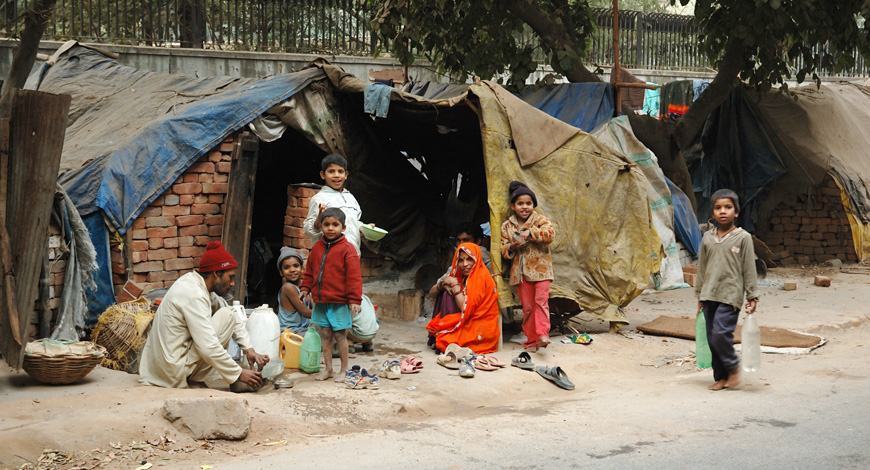
During the monsoon session of the Parliament, Member of Parliament Arun Sao asked State-wise details about the decline in poverty in the country, if any, and asked about the Centre’s periodical review of the methodology to assess poverty-levels.
In reply, the Centre referred to its 2011-12 data showed that 2,697.83 lakh people all over India were still below the poverty line (BPL) of which 2,166.58 lakh people were from rural areas. In Chhattisgarh, 101.27 lakh people were under the poverty line making up nearly 40 percent of the population. The Andaman and Nicobar Islands had the least number of BPL people (4,000) making up one percent of the population. On the other hand, Uttar Pradesh had the greatest number of BPL people (598.19 lakh).
Referring to a 2013 press note, Minister of State of the Ministry Of Planning and the Ministry Of Statistics & Programme Implementation (MoSPI) Rao Inderjit Singh said, “According to this Press Note, the number of persons living below poverty line in India has been estimated as 27 crore (21.9%) in 2011- 12 as compared to 40.76 crore (37.2%) in 2004-05. The rate of decline of poverty ratio during 2004- 05 to 2011-12 was 2.18 % per year.”
He said methodology for poverty assessment is reviewed from time to time and that the most recent report is under government consideration. Nowadays, the official poverty estimates are based on Tendulkar methodology.
In June 2014, the then Planning Commission under the Chairmanship of Dr. C. Rangarajan submitted a report that reviewed the Methodology for Measurement of Poverty. However, the Government is yet to take a decision on the report submitted by the Expert Group. After the formation of NITI Aayog that replaced the Planning Commission, a Task Force on Elimination of Poverty in India was created on March 16, 2015 under the Chairmanship of Dr. Arvind Panagariya, former Vice Chairman, NITI Aayog. Its report was submitted to the Prime Minister on July 11, 2016.
“The Terms of Reference for the Task Force inter alia included to “Develop a working definition of poverty”. The report of the Task Force primarily focuses on issues of measurement of poverty and strategies to combat poverty. Regarding estimation of poverty, the report of the Task Force states that “a consensus in favour of either the Tendulkar or a higher poverty line did not emerge. Therefore, the Task Force has concluded that the matter be considered in greater depth by the country’s top experts on poverty before a final decision is made. Accordingly, it is recommended that an expert committee be set up to arrive at an informed decision on the level at which the poverty line should be set,” he said.
Such revisions in methodology have been taking place since 1977. Originally, the Planning Commission was the nodal agency in the Government for estimation of poverty. It used a poverty line based on per capita consumption expenditure as the criterion to determine the persons living below the poverty line (BPL).
The last revision report was accepted in January 2011. It was written by an Expert Group under the chairmanship of Prof. Suresh D. Tendulkar in 2005 and submitted in November, 2009.
Related:
Poverty alleviation requires revision of Poverty Line
No data, so no compensation: Centre’s shocking revelation on migrant labourer deaths!
India tops Global Covid-19 trajectory, will the Health Minister speak up?
1 crore unemployed labourers in India: Ministry of Labour and Employment